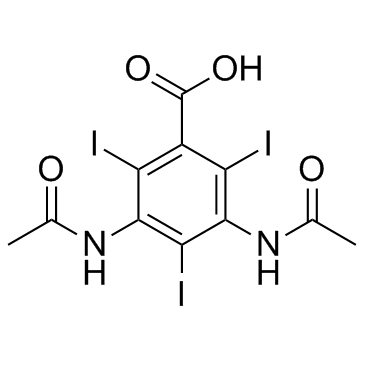Palladium nanoparticles produced by fermentatively cultivated bacteria as catalyst for diatrizoate removal with biogenic hydrogen.
Tom Hennebel, Sam Van Nevel, Stephanie Verschuere, Simon De Corte, Bart De Gusseme, Claude Cuvelier, Jeffrey P Fitts, Daniel van der Lelie, Nico Boon, Willy Verstraete
Index: Appl. Microbiol. Biotechnol. 91(5) , 1435-45, (2011)
Full Text: HTML
Abstract
A new biological inspired method to produce nanopalladium is the precipitation of Pd on a bacterium, i.e., bio-Pd. This bio-Pd can be applied as catalyst in dehalogenation reactions. However, large amounts of hydrogen are required as electron donor in these reactions resulting in considerable costs. This study demonstrates how bacteria, cultivated under fermentative conditions, can be used to reductively precipitate bio-Pd catalysts and generate the electron donor hydrogen. In this way, one could avoid the costs coupled to hydrogen supply. The catalytic activities of Pd(0) nanoparticles produced by different strains of bacteria (bio-Pd) cultivated under fermentative conditions were compared in terms of their ability to dehalogenate the recalcitrant aqueous pollutants diatrizoate and trichloroethylene. While all of the fermentative bio-Pd preparations followed first order kinetics in the dehalogenation of diatrizoate, the catalytic activity differed systematically according to hydrogen production and starting Pd(II) concentration in solution. Batch reactors with nanoparticles formed by Citrobacter braakii showed the highest diatrizoate dehalogenation activity with first order constants of 0.45 ± 0.02 h⁻¹ and 5.58 ± 0.6 h⁻¹ in batches with initial concentrations of 10 and 50 mg L⁻¹ Pd, respectively. Nanoparticles on C. braakii, used in a membrane bioreactor treating influent containing 20 mg L⁻¹ diatrizoate, were capable of dehalogenating 22 mg diatrizoate mg⁻¹ Pd over a period of 19 days before bio-Pd catalytic activity was exhausted. This study demonstrates the possibility to use the combination of Pd(II), a carbon source and bacteria under fermentative conditions for the abatement of environmental halogenated contaminants.
Related Compounds
| Structure | Name/CAS No. | Molecular Formula | Articles |
|---|---|---|---|
 |
Diatrizoic acid
CAS:117-96-4 |
C11H9I3N2O4 |
|
Biodegradation of pharmaceuticals in hospital wastewater by ...
2015-10-15 [Water Res. 83 , 293-302, (2015)] |
|
Bone metastases in castration-resistant prostate cancer: ass...
2014-04-01 [Radiology 271(1) , 220-9, (2014)] |
|
Optimization of culture conditions for bone marrow stromal c...
2012-01-01 [Rev. Med. Chir. Soc. Med. Nat. Iasi. 116(1) , 222-7, (2012)] |
|
Histopaque provides optimal mouse islet purification kinetic...
2010-04-23 [Islets 3(4) , 144-9, (2011)] |
|
Effective hydrodynamic shaping of sample streams in a microf...
2012-02-01 [IEEE Trans. Biomed. Eng. 59(2) , 374-82, (2012)] |